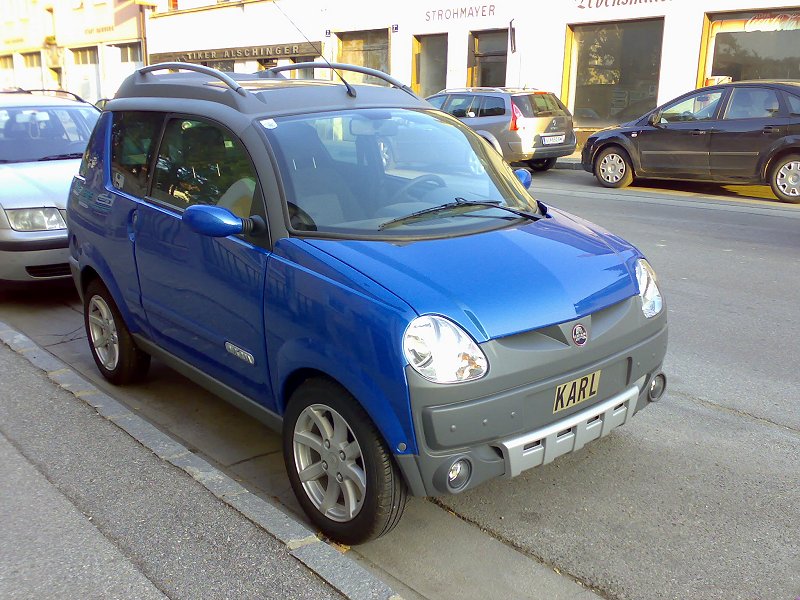The landscape of urban transportation continuously evolves, pushing boundaries of what city mobility can mean. Compact vehicles have emerged as a practical solution for navigating congested streets and tight parking spaces, addressing both environmental concerns and practical limitations of city living.
The Aixam Crossline 2008 represents a distinctive approach to urban mobility, combining the maneuverability of a microcar with unexpected spaciousness. This model challenged conventional assumptions about what a compact vehicle could offer, particularly in terms of interior space and functionality.
Design Evolution: Breaking New Ground
The 2008 iteration of the Aixam Crossline marked a significant departure from its predecessors. The redesigned front fascia introduced a more contemporary aesthetic, with redesigned headlights and chrome accents that elevated the vehicle’s visual appeal beyond typical microcar standards. These updates reflected a broader industry shift toward more sophisticated design language in compact vehicles.
The exterior modifications weren’t merely cosmetic — they served to enhance the vehicle’s functionality while maintaining its distinctive character. The chrome trim on the rear door, for instance, added both visual interest and practical protection for frequent loading and unloading.
“The Crossline’s 2008 refresh demonstrated remarkable attention to urban aesthetics. Its design successfully balanced compact dimensions with visual presence — a rare achievement in the microcar segment.” — Marcus Reynolds, Automotive Design Consultant
The attention to detail extended throughout the vehicle’s design, from the optimized door openings to the thoughtfully arranged storage spaces. This holistic approach to design created a microcar that felt more substantial than its compact footprint might suggest.
Technical Prowess and Urban Performance
The Crossline’s technical specifications reflect a clear focus on urban utility. The deliberate speed limitation to 45 km/h might seem restrictive at first glance, but it represents a thoughtful approach to city mobility.
Consider these key technical aspects that define the Crossline’s performance:
- automatic transmission optimized for smooth city driving;
- fuel-efficient engine design prioritizing economy;
- enhanced suspension system for urban terrain management;
- reinforced body structure for daily durability;
- optimized turning radius for tight city maneuvering.
Fact!
The Aixam Crossline's 45 km/h speed limit aligns perfectly with most European city center speed restrictions, making it an ideal urban transport solution while maintaining optimal energy efficiency.
The automatic transmission system deserves special mention for its role in enhancing the driving experience. It eliminates the complexity of manual gear changes, making the vehicle particularly accessible for new drivers or those seeking simplified urban mobility.
Urban Mobility Reimagined
The true value of the Crossline becomes apparent in daily city use. Its compact dimensions belie a surprisingly spacious interior, challenging preconceptions about microcar capabilities.
“After six months of daily use in central Warsaw, my Crossline has proven invaluable. Its size and maneuverability make it perfect for navigating narrow streets and finding parking in crowded areas.” — Jan Kowalski, Urban Commuter
The vehicle’s practical advantages extend beyond mere size. Its turning radius and visibility make it exceptionally well-suited for navigating tight urban environments, while the elevated seating position provides excellent visibility in traffic.
Important!
The Crossline's design allows for parking in spaces that would be inaccessible to conventional vehicles, effectively doubling the available parking options in crowded urban areas.
Market Position and Value
The Crossline’s market position reflects its unique capabilities. Recent sales data, including a November 2024 transaction in Poland at €5,949 for a well-maintained unit, demonstrates the model’s value retention.
The vehicle’s durability becomes evident through examples like the documented 37,559 km mileage case, showing reliable performance through years of urban use. This longevity factor significantly influences the total cost of ownership calculations.
Statistical analysis reveals consistent demand in urban markets, particularly in regions with challenging parking situations or environmental restrictions. The Crossline’s positioning as a practical urban mobility solution has contributed to its stable market presence.
The ownership experience extends beyond initial purchase considerations. Maintenance costs typically remain lower than conventional vehicles, partly due to the simplified mechanical systems and focus on urban use cases.
Beyond Transportation: A Mobility Philosophy
Urban mobility continues to evolve, with microcars like the Crossline shaping new possibilities for city transportation. The model’s influence extends beyond its production years, contributing to broader discussions about sustainable urban mobility solutions.
The legacy of the 2008 Crossline lies not just in its sales figures or technical specifications, but in its role in advancing the microcar segment. It demonstrated that compact urban vehicles could offer both practicality and character, setting new standards for the category.
| Advantages | Limitations |
|---|---|
| Exceptional maneuverability in urban environments | 45 km/h speed limitation |
| Minimal parking space requirements | Not suitable for highway use |
| Low operating costs | Limited passenger capacity |
| Automatic transmission for easy operation | Restricted cargo volume |
| Excellent fuel efficiency | Weather sensitivity |
| Durable construction | Limited long-distance capability |
| Easy maintenance | Specific service network requirements |
The Aixam Crossline 2008 represents a thoughtful approach to urban mobility challenges, offering practical solutions while acknowledging the realities of city living. Its influence continues to resonate in contemporary discussions about sustainable urban transportation.

